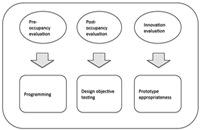Family Behavior in a Single-Family Room NICU

This research involved the use of handheld computer behavioral observation in two neonatal intensive care units (NICUs), one providing single family room (SFR) care and the other caring for infants in an open bay setting (OBS). The study was conducted at a time when dozens of hospitals were engaged in design decisions regarding the development of new NICUs and trying to decide which spatial configuration to implement.
Subsequent to this study, the behavior mapping methodology has been used in a variety of health environment settings, including research on the use of gardens in a pediatric hospital and a study on resident behavior at a nursing station in a senior facility. Additionally, students that are registered for architectural programming at Texas A&M University (TAMU) are trained to use the software.
Several aspects of this research pave the way for solid standards for future design research. Firstly, the study used reliable and valid social research methods for the gathering of data, and inferential statistics to analyze this data. Secondly, the research was interdisciplinary and involved participation from academics, practitioners and medical staff. Thirdly, the need for this study was generated from a request from practitioners considering the SFR option.
The need for research on healthcare environments has been expressed by practitioners and researchers. The research for “Family Behavior in a Single-Family Room NICU” responds to this need and serves as a model for future research, both with regard to methodology and interdisciplinary content.


Add comment
Log in to post comments